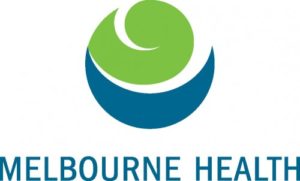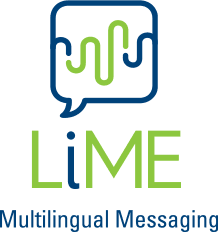Melbourne Health and All Graduates connecting Health Professional with multicultural patients across Victoria.
In 2018, Melbourne Health (Royal Melbourne Hospital [RMH]) expanded its use of video interpreting to facilitate telehealth consultations with multicultural patients. The initiative was supported under the Department of Health and Human Services – Language Services Innovation Grants program It followed research published in 2015[1] by Dr Thomas Schulz, Infectious Diseases Physician at RMH, which showed that patients from culturally and linguistically diverse communities preferred accessing interpreters via video conferencing rather than telephone, in situations when onsite interpreting was not possible.
RMH had worked with All Graduates on the earlier trial and approached them to be involved in this project as the supplier of interpreters via video. All Graduates took the role of training and supporting the interpreters to use the video platform and ensured the video connections were appropriate and the delivery of the service was of high quality.
Patients from over 100 language backgrounds make up over 50% of RMH patients, indicating an obvious and growing need to:
- ensure improved access to services
- remove communication barriers
- reduce costs and inconvenience for patients/interpreters located in regional/rural Victoria
- increase efficiency of service delivery through use of technology.
From April 2018 to January 2019 123 requests for video interpreters were made, 57% of these were secured with an interpreter. The most frequently requested language was Karen – 36 requests were made of which 53% were fulfilled . As had been found in the earlier study, patients in particular valued the ability to see and interact with their interpreter rather than being reliant on telephone communication only. The sessions were delivered in 26 languages [see below] involving patients in Melbourne and interpreters located in Melbourne and remotely throughout Victoria, and across NSW, Qld, and WA.
Video interpreting is currently delivered using the Commonwealth Government’s Health Direct telehealth platform, which enables browser-enabled videoconferencing accessible by any phone, tablet or computer. Using Health Direct, any health service can link to patients or interpreters in any location, and experience a high-quality audio-visual connection. In collaboration with RMH, All Graduates used administrator-level access to:
- allow customisation of the interpreter’s virtual waiting room
- undertake triage in relation to conference connections
- quality assure the connection prior to bringing the interpreter into the consultation.
Throughout the period, patients and interpreters alike enjoyed the user-friendly technology and ease of access to the video platform via the internet. One highly experienced Maltese interpreter commented that the video interpreting platform far surpassed any system used previously in his work interpreting with the courts, as no additional software, effort or expertise was required to connect to the videoconference. A Rohingya interpreter was able to successfully provide eight video interpreting sessions over two months while situated overseas. In another instance, an interpreter from a rare language located in regional Victoria, delivered an interpreting session via video which potentially saved RMH over $700 in anticipated travel expenses.
The project has been successful in embedding video as a standard means of improving access to interpreter’s for the significant refugee/immigrant populations living in Victoria, across a range of language backgrounds. It has demonstrated that any hospital that is enabled, through Health Direct, can engage interpreters from remote locations to provide interpreting services to their CALD patients . A benefit of the approach is the access to a nation-wide pool of interpreters, which is much larger than that which can be realistically supplied in onsite interpreting situations in Melbourne. During the initial period, Interpreter locations ranged from metro Melbourne (Hungarian), to Yackandandah and Nhill (Karen), to the suburbs of Sydney (Indonesian, French), Canberra (Amharic), Queensland (Kirundi) and WA (French and Malay). In these early stages, patients were all located in Melbourne with their healthcare professional, and the interpreters, remotely located, provided services via video.
Following success of the initial period, demand for the service has grown and includes the following languages: Amharic, Arabic, Burmese, Hakka, Karen, Kiswahili, Lao, Malay, Maltese Rohingya, Samoan, Tamil, Thai, Tibetan and Urdu.
Feedback from the patient and healthcare professional experience has been very positive, and it is particularly valued when it is able to be arranged at short notice, and a wider range of interpreting professionals can be sourced from metropolitan and regional locations around the country. Video interpreting technology has enormous potential to improve service access, delivery and flexibility, and reduce costs. Over time, the rollout of this capability will make consultations between any health professional, patient and interpreter in any location around the country a real possibility.
Telehealth consultations were delivered using interpreters in the following languages:
Amharic, Arabic, Burmese, Chin (Mizo), Finnish, French, Gujarati, Hungarian, Indonesian, Karen, Kirundi, Macedonian, Malay, Malayalam, Min Nan, Rohingya, Samoan, Somali, Spanish, Tamil, Tibetan, Tigre, Timorese Hakka, Turkish, Urdu and Vietnamese.
[1] Schulz TR, Leder K, Akinci I and Biggs B-A (2015), Improvements in patient care: videoconferencing to improve access to interpreters during clinical consultations for refugee and immigrant patients, Australian Health Review 39(4), pp395-399, 23 March




